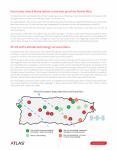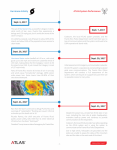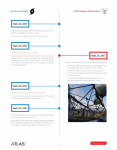TRob55
Member
Delaware County Council unanimously approved funding for the necessary upgrade of the County's emergency communications system at its August 17 public meeting.
With this first major radio upgrade since the 1970s, the County will deploy new, higher frequency radios, expand the coverage area, and increase reliability and coordination among First Responders. The three-year upgrade, which includes moving the County's system to a 700 MHz radio spectrum and the purchase of 3,700 new radios, will increase the ability of various agencies to communicate and work together.
The upgrade will cost approximately $38 million, a significant discount below the initial estimate. The upgrade will be completed by JVC Kenwood and follows an extensive review of various design approaches and products that took place beginning in 2021.
"An integral piece of our commitment to the public's safety is ensuring that First Responders across the county have the tools and resources they need to communicate with each other in real-time in order to effectively respond to crises and deploy critically needed emergency services," said Delaware County Councilman Kevin Madden. "This investment in upgrading our Public Safety Radio System will have an immediate effect and help keep our First Responders safe and allow them to more effectively work together to protect the public."
The upgrade will increase the capacity of the County's emergency system and its reliability by moving from a 500 MHz radio spectrum to 700 MHz, increasing the security of the system to prevent hacking, and purchasing and distributing 3,700 radios to ensure that first responders have access to the system's capabilities and features. The improved system does not require new towers to be built and will utilize the 20 radio transmission towers. Local governments will also have the opportunity to purchase new radios at a significantly reduced price under this contract.
Council’s vote to authorize the upgrade followed research and feedback from First Responders across the county. In 2019, Council commissioned a study of the needs of First Responders and the capabilities of Delaware County’s current radio system following reports that there had been multiple situations when emergency personnel could not reach the 911 system due to problems related to the use of lower 500 HMZ frequency radios. The radios that relied on older technology sometimes experienced a problem referred to as Troposphere Propagation (also known as ducting) occasionally interfering with the ability of a First Responder to communicate with the 911 Center. The new radios will utilize updated technology and new frequencies that should reduce interference issues.
“Council commends the Department of Emergency Services, under the leadership of Director Timothy Boyce and project consultants ACD Telecom and JVC Kenwood for their diligence in improving service and reliability across the county,” said Madden. “Council has always been and will remain committed to ensuring that we are careful stewards of taxpayer money, even as we make critical and long-overdue investments in our county and its future."
With this first major radio upgrade since the 1970s, the County will deploy new, higher frequency radios, expand the coverage area, and increase reliability and coordination among First Responders. The three-year upgrade, which includes moving the County's system to a 700 MHz radio spectrum and the purchase of 3,700 new radios, will increase the ability of various agencies to communicate and work together.
The upgrade will cost approximately $38 million, a significant discount below the initial estimate. The upgrade will be completed by JVC Kenwood and follows an extensive review of various design approaches and products that took place beginning in 2021.
"An integral piece of our commitment to the public's safety is ensuring that First Responders across the county have the tools and resources they need to communicate with each other in real-time in order to effectively respond to crises and deploy critically needed emergency services," said Delaware County Councilman Kevin Madden. "This investment in upgrading our Public Safety Radio System will have an immediate effect and help keep our First Responders safe and allow them to more effectively work together to protect the public."
The upgrade will increase the capacity of the County's emergency system and its reliability by moving from a 500 MHz radio spectrum to 700 MHz, increasing the security of the system to prevent hacking, and purchasing and distributing 3,700 radios to ensure that first responders have access to the system's capabilities and features. The improved system does not require new towers to be built and will utilize the 20 radio transmission towers. Local governments will also have the opportunity to purchase new radios at a significantly reduced price under this contract.
Council’s vote to authorize the upgrade followed research and feedback from First Responders across the county. In 2019, Council commissioned a study of the needs of First Responders and the capabilities of Delaware County’s current radio system following reports that there had been multiple situations when emergency personnel could not reach the 911 system due to problems related to the use of lower 500 HMZ frequency radios. The radios that relied on older technology sometimes experienced a problem referred to as Troposphere Propagation (also known as ducting) occasionally interfering with the ability of a First Responder to communicate with the 911 Center. The new radios will utilize updated technology and new frequencies that should reduce interference issues.
“Council commends the Department of Emergency Services, under the leadership of Director Timothy Boyce and project consultants ACD Telecom and JVC Kenwood for their diligence in improving service and reliability across the county,” said Madden. “Council has always been and will remain committed to ensuring that we are careful stewards of taxpayer money, even as we make critical and long-overdue investments in our county and its future."






